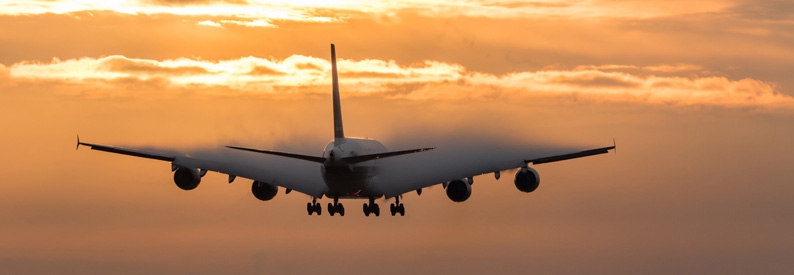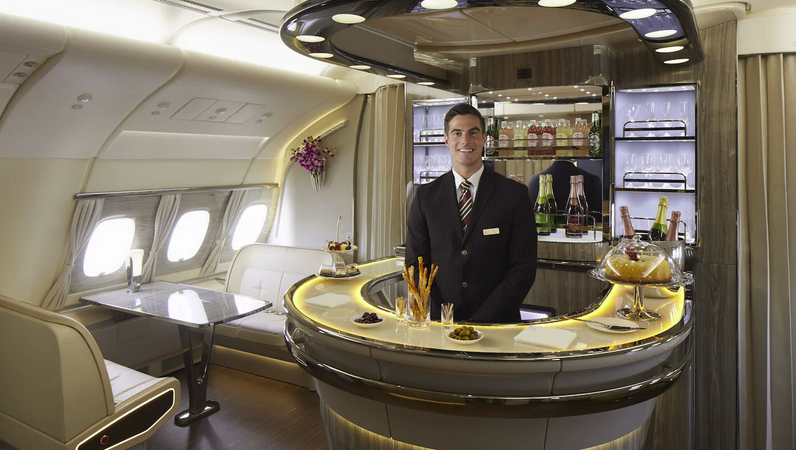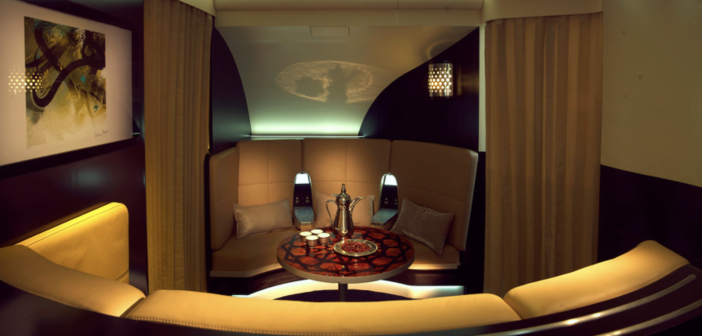How the Airbus A380 Superjumbo Redefined Luxury Air Travel

Flying on the Airbus A380—the world’s largest passenger aircraft—is still one of the most indulgent experiences in commercial aviation. With two full decks, cavernous cabins, and whisper-quiet engines, the double-decker jet offers a level of space and comfort unmatched by other airliners. From private suites and onboard showers to cocktail lounges and expansive in-flight entertainment systems, the A380 was designed to make long-haul travel feel like a flying hotel. Even in economy, passengers enjoy wider seats, higher ceilings, and a smoother ride, while premium cabins push the boundaries of service, privacy, and amenities at 35,000 feet.
Despite production ending in 2021, the A380 remains the flagship of several major international carriers. Emirates operates the largest fleet, making the aircraft a cornerstone of its global hub-and-spoke network from Dubai. Other airlines still flying the superjumbo include Singapore Airlines, British Airways, Qantas, Lufthansa, Qatar Airways, Korean Air, Asiana Airlines, and All Nippon Airways on select routes. These carriers deploy the jet on some of the world’s busiest long-haul corridors, ensuring the A380 continues to set the gold standard for spacious, luxurious travel even as the industry pivots toward smaller, more fuel-efficient aircraft.

Why Airlines Balance Cabin Weight and Premium Upgrades in Next-Generation Jetliners
At first glance, it may seem contradictory for airlines to remove weight from the economy section while adding heavier, high-end upgrades elsewhere in the cabin. Yet marketing and revenue experts explain that this mixed-class strategy is designed to optimize fuel savings for the largest group of passengers—economy travelers—while protecting the lucrative revenue streams from premium passengers. This delicate balance of market segmentation and yield management allows carriers to navigate economic downturns and industry slumps. As evolutionary scientists point out, survival is not about being the fastest or strongest but about being the most adaptable—an idea that perfectly mirrors how airlines design their cabins for resilience.
Aviation forecasters project the global commercial fleet will double within 20 years, requiring about 40,000 new aircraft. New-generation jetliners from leading manufacturers are reshaping the economics and passenger experience of air travel. “Designed to operate in ways that are highly cost-effective, these new aircraft types should enable airlines to match aircraft capacity to market demand as projected over the coming decades,” Jennifer Coutts Clay, the author of “JETLINER CABINS: Evolution & Innovation.”
The Airbus A380 exemplifies this shift. Designed to carry 555 passengers in mixed-class layouts on inter-hub and high-volume point-to-point routes such as Tokyo–London, Frankfurt–Singapore, and Los Angeles–Sydney, the A380 introduced the world’s first true double-deck passenger cabin with two aisles on both decks. It created unprecedented opportunities for branding and product differentiation, offering airlines the ability to add lounges, suites, and even showers while maintaining high passenger volumes.
Entering service in 2007, the A380 delivered 50% more floor space than older aircraft—a technological leap comparable to the debut of the Boeing 747 in 1969, which was the first widebody twin-aisle jetliner and had 2.5 times the capacity of its Boeing 707 predecessor. The A380 was also the first commercial aircraft to incorporate 25% composite materials into its structure. These lighter, stronger, corrosion-resistant materials reduce maintenance and fuel burn, further enhancing efficiency.

By integrating premium upgrades with fuel-saving designs, next-generation cabins like those on the A380 allow airlines to balance passenger comfort, operational costs, and long-term competitiveness in an increasingly demanding market.
“Press articles have speculated on the possibility of using the lower-lobe (‘belly-level’) deck for revenue-earning duty-free shops, casinos, children’s nurseries, business centres, self-service cafeterias, beauty salons, gyms, bistros and libraries; also cabin-crew rest facilities and galley work areas, toilets and shower units (some examples are shown in this Chapter). So many exciting options for airlines to promote themselves! And marketing departments can have a wonderful time inventing unique ‘wow-factor’ magic-moments to amuse and entrance the huge numbers of potential customers.” Jennifer Coutts Clay, the author of “JETLINER CABINS: Evolution & Innovation.”
Inside the Airbus A380: Comfort, Space, and the Future of Luxury Air Travel
Like other Airbus long-range aircraft, the A380 can be equipped with cutting-edge inflight entertainment (IFE) systems that provide audio and video on demand (AVOD) via individual liquid crystal display (LCD) screens. Passengers have instant access to a vast library of digitally stored movies, TV shows, and music. Onboard Wi-Fi also allows travelers to stay connected during the flight, using mobile phones, laptops, and tablets to access email, stream content, or enjoy multiplayer games and live video broadcasts.
Passenger comfort extends beyond entertainment. The A380 features an extensive range of subtle lighting settings with localized controls, enabling airlines to create tailored moods throughout the journey. Advanced air-conditioning systems deliver an airy, draft-free cabin environment, while high-efficiency filters remove 99.9% of unwanted substances to achieve hospital-grade air quality. These systems can be adjusted for each zone of the aircraft, optimizing passenger comfort at all times.
The A380’s sheer size sets it apart. With all seats removed, the aircraft offers enough space to fit 10 squash courts—a striking illustration of its unparalleled cabin volume. This spaciousness benefits all classes of service, from economy to premium suites, creating opportunities for airlines to innovate with unique layouts. Future versions of the A380 could potentially carry close to 1,000 passengers in short-haul or charter configurations.
But the question remains: how will airlines choose to use this extra space? History offers contrasting examples. For example, for many years, Japanese airlines configured their Boeing 747s with 570 seats on their high-density domestic routes. “By contrast, consider the luxurious use of space for ‘dining in the sky’ at specially installed restaurant-type tables on the upper deck of the Boeing 747 fleet operated by Pan Am in the 1970s and the glitzy, glamorous lounges on the upper deck of the Boeing 747 fleet flown by Braniff.” Jennifer Coutts Clay, the author of “JETLINER CABINS: Evolution & Innovation.”
With its blend of space, comfort, and cutting-edge technology, the Airbus A380 represents not just a milestone in aviation engineering but a blank canvas for airlines to redefine what long-haul travel can be. Whether carriers use that potential for luxury or high-density seating will shape the aircraft’s legacy for decades to come.

Will the Airlines Order a New Version, the A380neo?
Whether airlines will ever order a new version of the Airbus A380—sometimes dubbed the “A380neo”—remains uncertain. With only about 250 A380s ever built and production ending in 2021, the program’s economics were always challenged by its size, infrastructure requirements, and the industry’s gradual pivot toward point-to-point flying. While the A380 has proven its value for a few hub-focused carriers like Emirates, its high trip costs and limited market niche make a clean-sheet revival unlikely without major advances in engine efficiency and environmental performance. Airbus itself has signaled that its current priorities are the A350 and A321 families rather than re-engineering the superjumbo.
Whether the future of luxury air travel is truly grim depends on how airlines define and deliver “luxury” in an industry increasingly driven by efficiency. Today, carriers are clearly favoring new-generation large twinjets such as the Airbus A350-1000 and Boeing 777-9. Offering seating capacities of roughly 375 to 450 passengers, these aircraft deliver near-A380 levels of space with dramatically lower fuel burn, reduced crew requirements, and much greater flexibility on long-haul routes—advantages that appeal to both investors and regulators amid tightening environmental standards.
That does not mean premium experiences will disappear. Instead, the trend in luxury air travel is shifting toward upgraded business-class cabins with more seats and larger, more private suites, while traditional first-class offerings are being scaled back or reinvented as ultra-exclusive “bedrooms in the sky.” These next-generation twinjets boast more passenger-friendly layouts than earlier models, and airlines are investing heavily in suites, premium economy, and cutting-edge inflight entertainment to retain high-fare customers. Unless global hub-and-spoke demand grows enough to justify another superjumbo, the future of long-haul luxury will belong to large, efficient twin-engine flagships rather than a reimagined A380neo—leaving the original double-deck giant as an enduring icon of an era when “luxury by sheer scale” defined intercontinental flying.
Related News: https://airguide.info/?s=airbus+A380, https://airguide.info/category/magazineonline/airlines/airline-in-flight-services/
Sources: AirGuide Business airguide.info, bing.com, excerpts from: Jennifer Coutts Clay, the author of “JETLINER CABINS: Evolution & Innovation,” the #9 Best Seller for Industrial Design in the Amazon Kindle Store. https://jetlinercabins.com/
